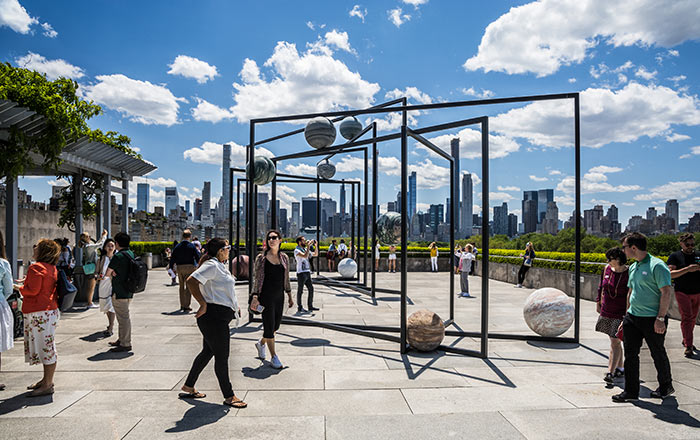Private Gallery
Sheela Gowda Indian
Not on view
An Indian artist who lives and works in Bangalore, Gowda trained as a painter under K.G. Subramanyan. Gowda’s practice took a transformative turn in the mid-1990s when she started working in sculpture and installation, incorporating into her work local materials such as cow dung and Kumkum, a tumeric-based substance used in religious rituals. Her work is concerned with seismic changes in India brought about by rapid urbanization and the rise of right-wing fundamentalism.
Private Gallery comprises two panels joined at right angles and placed in the corner of a room to create an enclosed space. A series of small horizontal and vertical watercolors are pinned to the interior of wooden panels and the near wall. The exterior surfaces are covered in a marble-patterned laminate, a mass-produced material used in urban constructions in India; the interior surfaces are coated with a layer of dung, overlaid with cow pats the size of a fingertip, similar to those seen on walls throughout rural India. Cows are endowed with religious and symbolic significance. The dung is valued in the village economies of India, generally associated with female labor: used as fuel for cooking, as fertilizer, as insect-repellent, and for its antibacterial properties. The watercolors portray people from the district where Gowda lives. Specifically, they are portraits of migrants who retain their rural ways while searching for employment in the city. Other watercolors show landscapes with construction sites seen from a car window. It is the contrast between the interior and the exterior that affirms Gowda’s own description of the work as being located between the modern city and the countryside: "the city being the façade in the formica sheets on the outside, and in the inside of the room-like installation a rural world."
This image cannot be enlarged, viewed at full screen, or downloaded.
